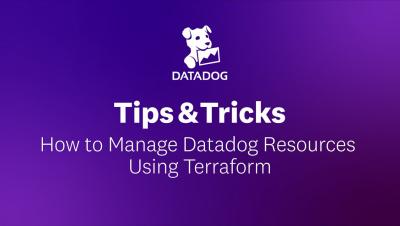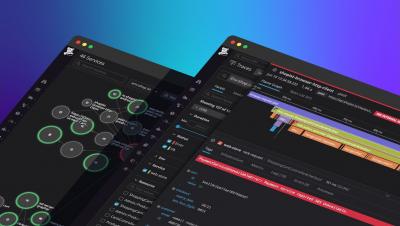Operations | Monitoring | ITSM | DevOps | Cloud
Datadog
How to Manage Datadog Resources Using Terraform | Datadog Tips & Tricks
Monitor Apache Ignite with Datadog
Apache Ignite is a computing platform for storing and processing large datasets in memory. Ignite can leverage hardware RAM as both a caching and storage layer to serve as a distributed, in-memory database or data grid. This allows Ignite to ingest and process complex datasets—such as those from real-time machine learning and analytics systems—in parallel and at faster speeds than traditional databases supported by only disk storage.
Monitoring health information systems with HIPAA-compliant logs
As healthcare and life sciences organizations move to digitize their operations and automate their workflows, they are encountering new challenges related to HIPAA regulations, which dictate how patient information should be collected and stored.
Monitor Hazelcast with Datadog
Hazelcast is a distributed, in-memory computing platform for processing large data sets with extremely low latency. Its in-memory data grid (IMDG) sits entirely in random access memory, which provides significantly faster access to data than disk-based databases. And with high availability and scalability, Hazelcast IMDG is ideal for use cases like fraud detection, payment processing, and IoT applications.
Observability at The Edge with Fastly and Datadog
Driving Service Reliability Through Autoscaling Workloads on OpenShift
Monitor HiveMQ with Datadog
HiveMQ is an open source MQTT-compliant broker for enterprise-scale IoT environments that lets you reliably and securely transfer data between connected devices and downstream applications and services. With HiveMQ, you can provision horizontally scalable broker clusters in order to achieve maximum message throughput and prevent single points of failure.
Best practices for creating end-to-end tests
Browser (or UI) tests are a key part of end-to-end (E2E) testing. They are critical for monitoring key application workflows—such as creating a new account or adding items to a cart—and ensuring that customers using your application don’t run into broken functionalities. But browser tests can be difficult to create and maintain. They take time to implement, and configurations for executing tests become more complex as your infrastructure grows.











